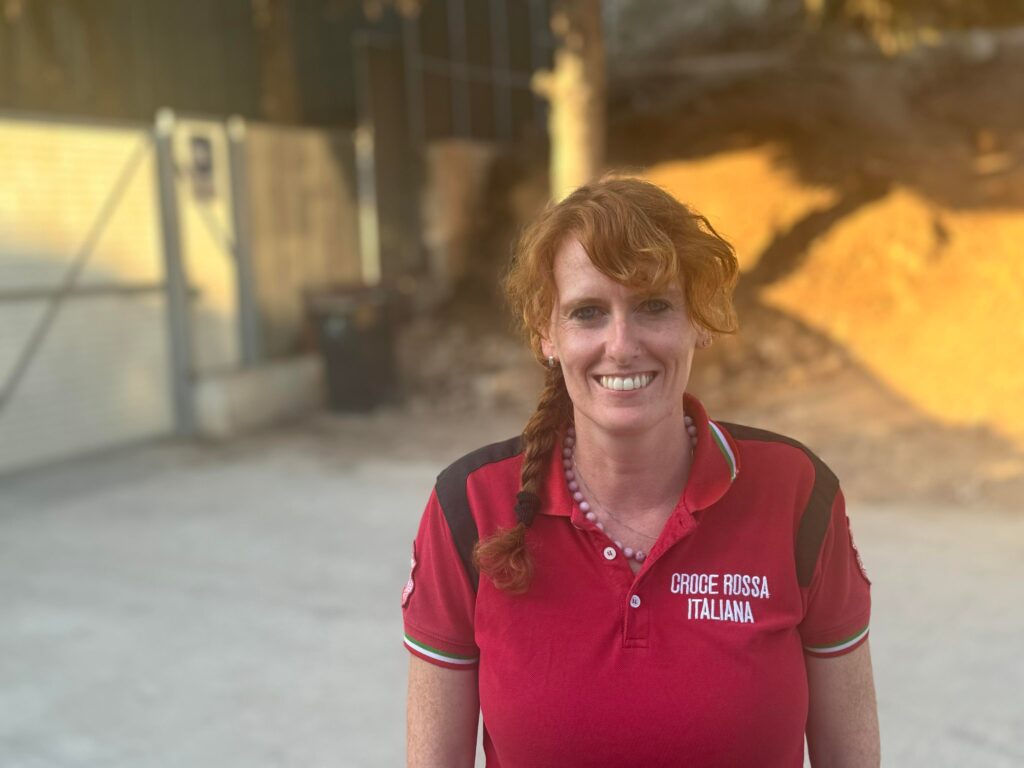
LAMPEDUSA –The Red Cross in Lampedusa has confirmed that among the women who come illegally to the southern Italian island, a disproportionate number are pregnant, seeming to confirm prior fears that pregnant women are being exploited by traffickers.
The European Conservative spoke to Serena Corniglia of the Italian Red Cross (CRI), who manages the hotspot, the migration reception facility on the island that has been administered by the CRI since June of this year.
According to Corniglia, the number of women who arrive on migrant boats only makes up around 10-12% of the migrants overall, but she claimed the number of women who were pregnant was a startlingly large number.

“There are a lot of pregnant women; we see them every month. For example, in August, I think there were between 200-300 pregnant women in the centre,” she said.
Prior Italian media reports in 2021 claimed that people smugglers were purposely putting pregnant women aboard illegal migrant boats in a cynical effort to attract the attention of authorities and increase the chances the boat would be intercepted.
Some pregnant women have died while trying to cross the Mediterranean, while others have reportedly given birth in reception centres or even aboard ships while still at sea.
The reports highlighted that the alleged tactic was often seen in Lampedusa, and the trend appears to continue to this day.
According to Corniglia, the CRI attempts to have the migrants who arrive in Lampedusa processed and sent to the Italian mainland within a 48-hour period, but noted that was not possible sometimes due to adverse weather conditions.
Last month, around 5,000 illegal migrants arrived in Lampedusa within a single day, nearly equalling the island’s population of just over 6,000. The centre, which has room to accommodate around 400 people, was completely overwhelmed.
However, in the weeks since, the location has seen fewer arrivals, and when The European Conservative spoke to Corniglia, the hotspot was under capacity, a rare occurrence in the last several years.
“We can consider the situation relatively calm now. There are few people inside the centre right now, and we offer them all the food and services they need. But you need to consider that if you have thousands of people, those things take time. So sometimes, people prefer to go into the city,” she said.
She added that despite the large police and military presence at the hotspot and its tight security, migrants were free to leave and head into the city, which is a mere 15-minute walk from the centre itself.
The subject of unaccompanied minor migrants has been controversial in some countries, where migrants have often been caught lying about their age after authorities use medical tests to better identify their true age.
On Lampedusa, the number of self-described minors is relatively high, according to Corniglia who stated, “From June to now, the average percentage of minors is between 16 to 20%, but the number of unaccompanied minors is quite high.“
“We try to offer them psychological support, first of all, and we have specialised operators who organise activities. They can help children to relax, to play, and even begin to learn some Italian,” she added.
It is not the role of the Red Cross to identify whether or not migrants who claim to be underage are telling the truth, as Corniglia stated that the police, of whom there are many at the hotspot, worked to properly identify those arriving. When asked if that also extended to identifying possible human traffickers among the migrants, Corniglia declined to answer.
The CRI also works with several other groups at the centre, including Save the Children and the United Nations Refugee Agency (UNHCR), but Corniglia was clear to point out the Red Cross had no connections to migrant taxi NGOs, also known as search and rescue NGOs, or their activities at sea.
“We’re not in direct contact with the search and rescue NGOs. They are in contact with the coast guard, notifying them of their arrival, but we’re at the harbour when they do,” she said.
Migrant taxi NGOs play a significant part in the number of arrivals in Italy, with the various NGOs from Italy, Spain, Germany, and elsewhere having ferried at least 10,000 migrants to Italy in the first nine months of 2022 alone.
Their activities continue in the Mediterranean despite attempts by the Italian government under Giorgia Meloni to curtail them by assigning them to ports in the north of Italy rather than overwhelming places like Lampedusa and Sicily.
